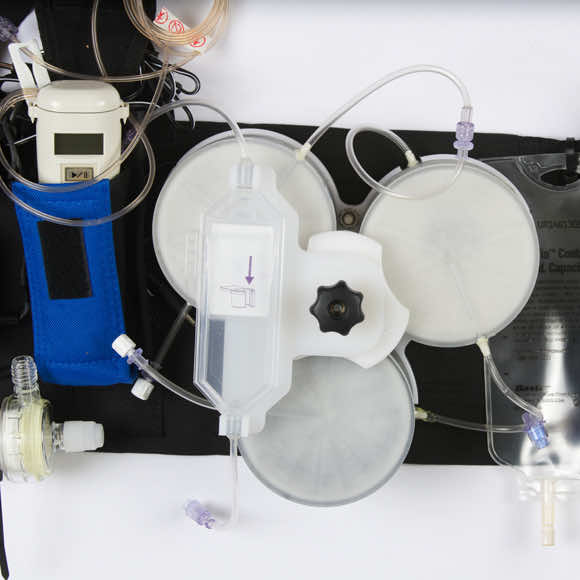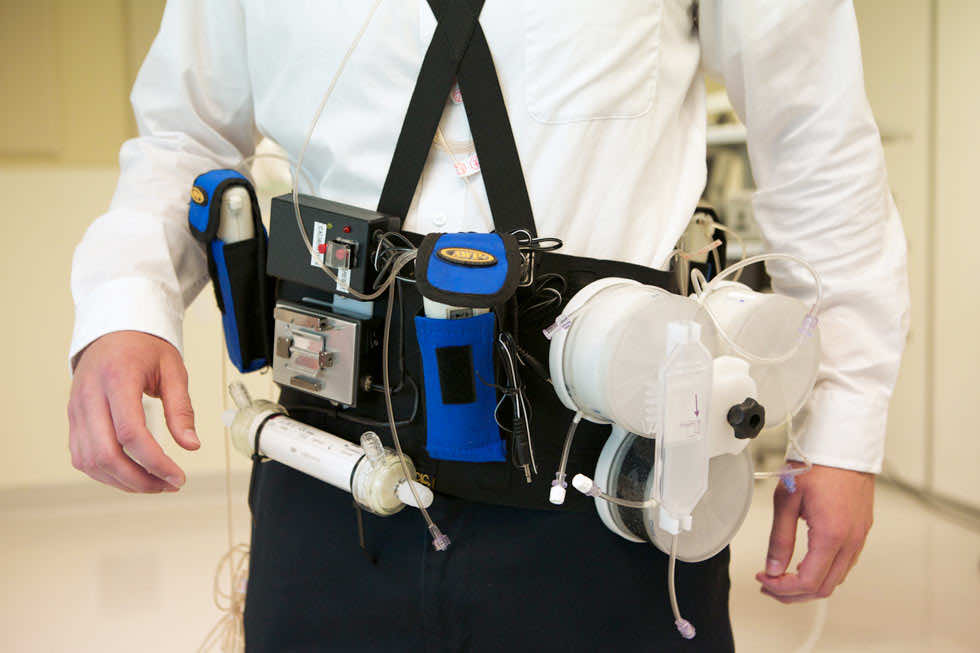Not many of you may remember the Wearable Artificial Kidney (WAK) concept from 2009. It was aimed at producing an alternative to the conventional dialysis. The belt-sized prototype has gained the approval for human testing in the United States from the FDA and the clinical trials shall start in Seattle by the end of this year.
After about a decade of development, Victor Gura and his team at the Cedars-Sinai Medical Centre, Los Angeles and the David Geffen School of Medicine at UCLA conceived the WAK. The miniaturized dialysis machine is tiny enough to be worn like a tool belt and connects to the patient via a catheter. According to the team behind this gadget, the patients will no longer have to remain stagnant on a bed or chair while the process of dialysis is carried out but will be able to do whatever they want while the blood gets cleaned.
The WAK works on the same principle as the traditional dialysis machine and weighs 4.5 kg. The design is almost identical but by taking benefit from advancement made in terms of batteries, materials and the miniaturization, the WAK team was able to shrink the size of this wearable medical gadget. The amount of water needed has also been reduced down to a pint as compared to the 40 gallons required by the conventional machine.
The WAK device as of now, is at the prototyping phase with limited human testing that was carried out in Italy and UK. It also enjoys the position among the three proposals out of a total of 32 that were chosen for the FDA’s Innovation Pathway program that is aimed at facilitating the development of medical products. The clinical trials will attend to 16 patients out of which 10 shall be chosen for complete trial. 24-hour testing will be carried out during which the patient shall be able to move around. Blood samples during this period will be collected followed by a 28-day observational period as follow up.
Once these tests prove to be successful the team has plans on working on a lighter and more streamlined version of this gadget. The idea is to come up with a kidney like dialysis machine that can mimic the working of a normal kidney. The team speculates that this will allow patients to be free from diet constraints while imparting a more natural routine.

